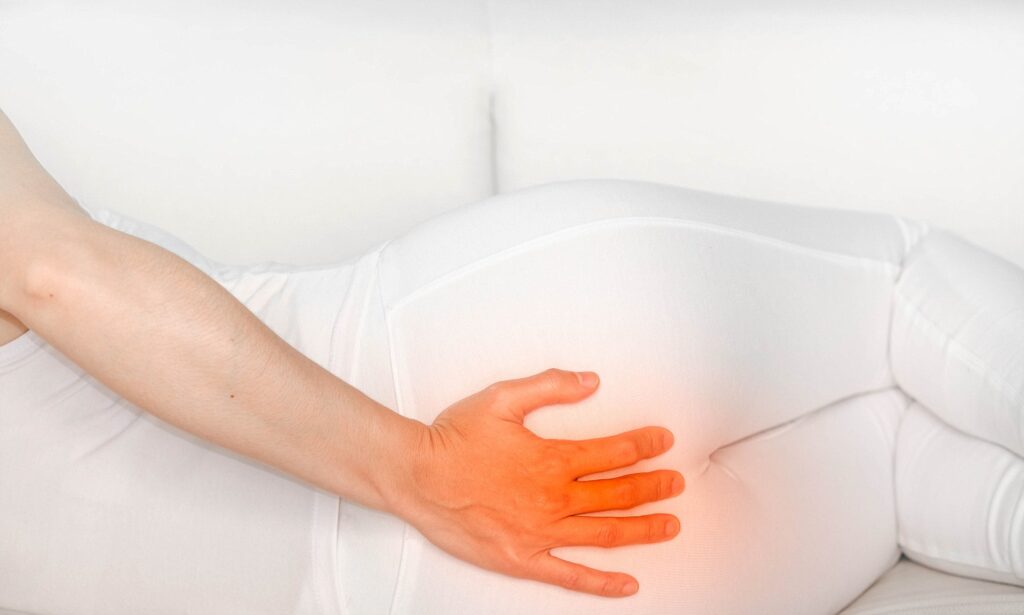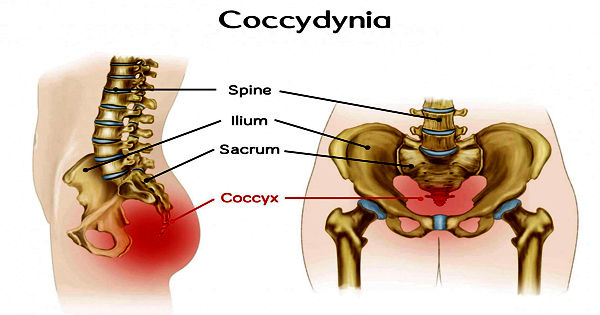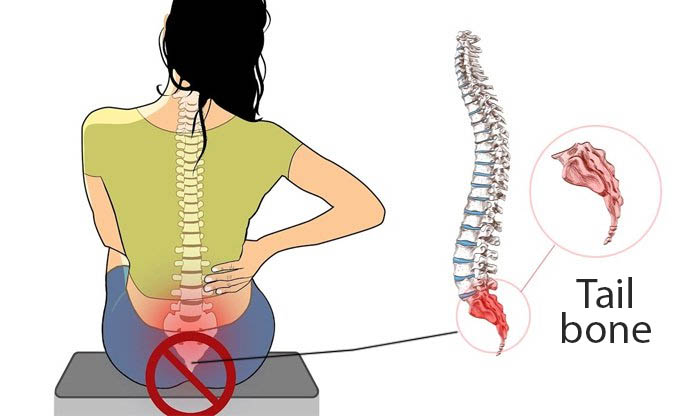UNDERSTANDING TAIL BONE PAIN
The question here is how can a vestigial and an insignificant organ of human body ,a tail can cause so much problem to the sufferer?
Unlike an inflamed appendix causing a lot of pain,ultimately to be removed , an inflammed tail bone does not always require a surgery and involves many conservative options .Read on to know more…

What is a coccygodynia or coccydynia or tail bone pain or coccalgia or coccygeal neuralgia?
The coccyx is the lowest region of the vertebral spine, located inferior to the sacrum. The pain is most commonly triggered in a sitting position, but may also occur when the individual changes from a sitting to standing position
The coccyx typically has three to five vertebral segments, with cartilaginous joints between the sacrum and coccyx and between coccygeal vertebral bodies.
Although coccydynia resolves in the majority of patients with supportive care, symptoms can persist for months or years and, in some patients, may become a life-long condition. Intractable coccydynia is relatively uncommon, but when it occurs it can dramatically decrease a patient’s quality of life.

RISK FACTORS:
- OBESITY, the coccyx is more vulnerable to increases in intrapelvic pressure while sitting, increasing the risk of displacement backward of the coccyx.
- RAPID WEIGHT LOSS, the cushioning around the coccyx may be lost.
- The risk of coccygodynia is 5 times higher in females than it is in males, which may be a result of the increased pressure that occurs during pregnancy and delivery.
TYPES:
Coccygodynia may be classified as post-traumatic, non-traumatic or idiopathic.
- Post-traumatic coccygodynia is usually a result of internal or external trauma. For example, external trauma could result from a backwards fall that might dislocate or break the coccyx and internal trauma could result from a difficult childbirth or a childbirth with an assistive delivery. Minor trauma, such as repetitive sitting on hard surfaces can also lead to coccygodynia.
- Non-traumatic coccygodynia can result from degenerative disc disease, hyper and/or hypo-mobility of the sacrococcygeal joint, infectious diseases and different variations in the configuration of the coccyx.
- Idiopathic coccygodynia occurs in the absence of any pathology in the coccyx.

CLINICAL PRESENTATION:
The most common complaint of coccygodynia is pain in and around the coccyx without any reports of severe low back pain or radiating pain. The pain is typically localized and described as a “pulling” or “cutting” sensation. Individuals will commonly report tenderness on palpation of the coccyx.
Individuals will report that pain is alleviated with sitting on the legs or buttock. Patients may also report pain with defecation or the frequent need to defecate. Other complaints may include pain with coughing or increased pain during menstruation.
DIAGNOSIS:
Apart from palpation and physical examination, Dynamic radiographs taken in both sitting and standing positions can provide measurements of coccygeal displacement. Radiographs are usually taken if the pain persists for a duration that is greater than 8 weeks.

MANAGEMENT:
Conservative or non-surgical treatments are typically the gold standard when treating coccygodynia, being successful for 90% of cases.
Non-operative treatments may range from the recommendation of non-steroidal anti-inflammatory drugs (NSAIDs), activity modification, ergonomic adjustments, and physical therapy.
Modified wedge-shaped cushions (coccygeal cushions) can relieve the pressure on the coccyx while the patient is seated Training patients to adopt proper sitting posture can correct poor postures that can be contributing factors. The application of heat and cold over the site also may be beneficial. Exercises that stretch the ligaments and strengthen the muscles supporting the lower spine. Pelvic floor exercises Use of TENS Topical NSAIDs application.
Surgery is usually only considered when patients continue to complain of coccygeal pain after the use of conservative treatments. A coccygectomy, which is the removal of a section or all of the coccyx.But this is rarely required.
0 Comments